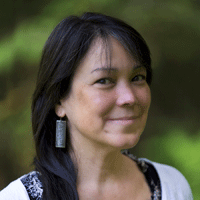How Much Is Enough?: In Depth
- Energy, Housing, Food, Water: What’s a Fair Share?
- Share
Energy, Housing, Food, Water: What’s a Fair Share?
What equitable resource distribution looks like.
2 MIN READ
Aug 10, 2021
What’s a Fair Share of Energy?
Equitable resource distribution requires the world’s affluent countries to reduce their ecological impact while low-income nations gain greater access to resources until there is convergence. And where should that convergence happen? For energy distribution, researchers at the International Institute for Applied Systems Analysis say the minimum global energy flow required to achieve universal decent living standards could be as low as 500 watts per capita. Less draconian, the International Energy Agency projects that the U.N.’s Sustainable Development Goals can be achieved worldwide with an energy flow of about 1,300 watts per capita—about what Cuba uses.
Data source: World Bank, latest International Energy Agency data available for each country.

What’s a Fair Share of Housing?
A solidly built home with adequate floor space, electric lighting, thermal comfort, and good indoor toilets. How much? For a household of up to three people, a minimum of 323 square feet plus 107 additional square feet per occupant beyond three.
Sources: Narasimha Rao and Jihoon Min of the International Institute for Applied Systems Analysis, “Decent Living Standards: Material Prerequisites for Human Wellbeing,” 2017; Statista.

What’s a Fair Share of Food?
An adequate daily consumption of protein, vitamins, and minerals. How much? For optimal health, 2,353 calories daily for an average adult.
Sources: World Health Organization; U.N. Food and Agriculture Organization. Note: Food supply data measures the food available for consumption at the household level but does not account for food wasted or not eaten at the consumption level.

What’s a Fair Share of Water?
A safe, reliable water supply. How much? Minimum of 13 gallons daily per capita.
Sources: Narasimha Rao and Jihoon Min of the International Institute for Applied Systems Analysis, “Decent Living Standards: Material Prerequisites for Human Wellbeing,” 2017; USGS, 2015.



